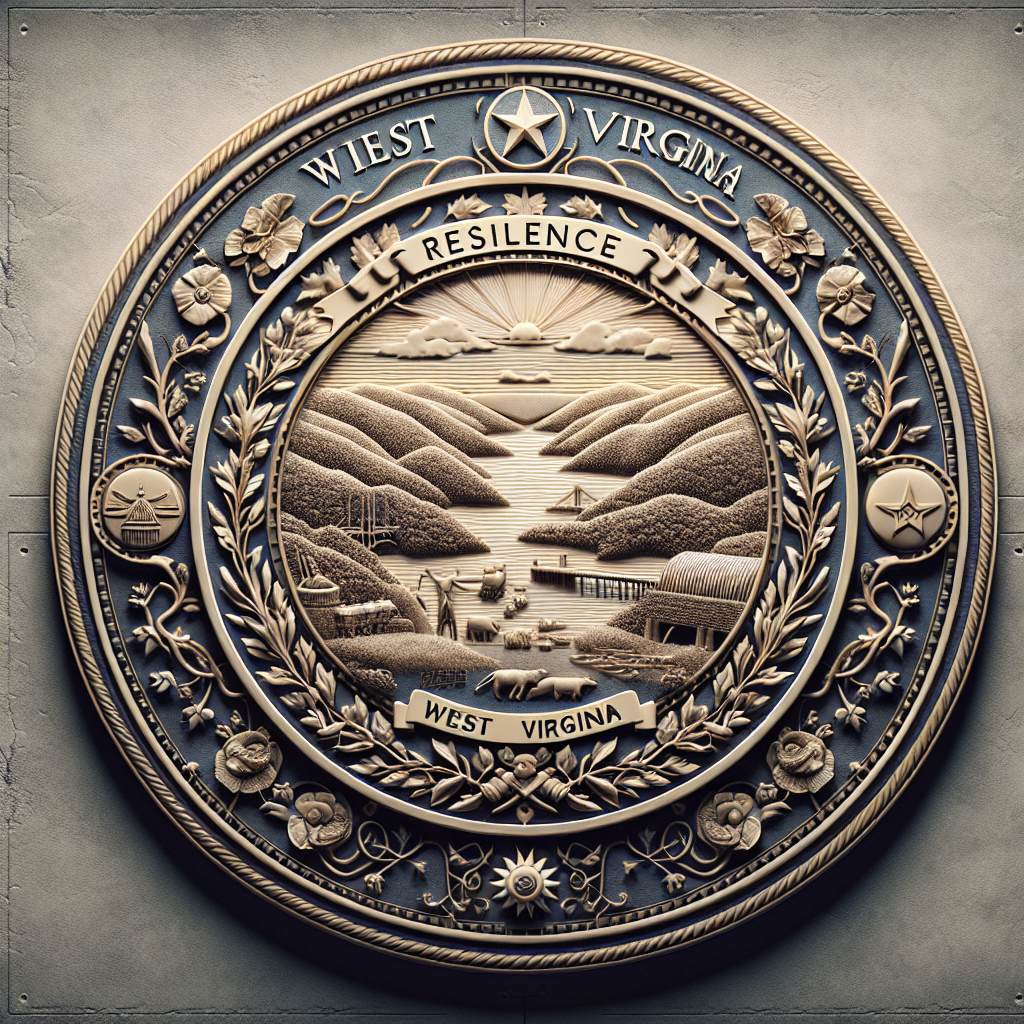Unlocking the Enigmatic Seal of West Virginia: A Symbol of Hope and Heritage
Imagine a small emblem that tells a grand story of determination, progress, and natural splendor. The Seal of West Virginia encapsulates just that—an iconic symbol officially adopted in 1863, representing the state’s rich history and its aspirational spirit. Established amidst the turbulence of the American Civil War, when the region separated from Virginia, this seal signifies a fresh start for West Virginia. It's an emblem found in the heart of the Appalachian region, reflecting the distinct identity and values of its people.
A Rich Symbolic Tapestry
The State Seal of West Virginia is a finely woven narrative requiring more than a cursory glance to fully appreciate. The centerpiece of the seal proudly displays a farmer and a miner, standing resolutely by a rock. These figures seamlessly integrate both agriculture and industry, which were—and continue to be—cornerstones of the state's economy and culture. Interestingly, the rock they stand beside bears the pivotal date of "June 20, 1863," reminding us of West Virginia's unique birth as a state at the height of a nation divided.
At the base of this tableau, two rifles lie crossed with a Liberty cap positioned above. This is no ordinary cap; it symbolizes freedom and the fight for the rights of people, acknowledging West Virginia's contribution to the Union's cause during the Civil War. Encircling this emblematic core are rhododendrons, the state flower, encasing the seal with natural beauty and tying back to the lush, mountainous terrain that defines the region.
Dissecting the Latin: Montani Semper Liberi
While many state seals boast a Latin motto, West Virginia's is exceptionally poignant. "Montani Semper Liberi" translates to "Mountaineers are Always Free," a phrase that strikes an optimistic chord reflecting the indomitable spirit of the state's inhabitants. This message of freedom and autonomy resonates through West Virginia's history and continues to inform its future aspirations.
An Evolution of Design
The original design of the West Virginia seal has withstood the ravages of time, retaining its primary symbols with minor refinements. While the artistic rendering of figures and elements may have adapted to modern design sensibilities, the fundamental essence remains unchanged. Each iteration preserves the historical elements with a contemporary twist, symbolizing the state’s balance between honoring tradition and embracing progress.
Historically speaking, the use of seals dates back to ancients, serving as markers of authenticity and authority. In the context of West Virginia, the state seal not only authenticates state documents but also acts as a constant reminder of the feats and struggles that shaped this vibrant community.
The Seal's Current Use: More than Mere Symbolism
The significance of the seal extends beyond its design. Its application underscores its symbolic importance, appearing on executive documents, state flags, official buildings, and even diverse memorabilia. These are not just ornamental uses; they represent a tangible connection to the state’s governing body and its citizens, reinforcing a shared identity.
In educational contexts, the seal is a source of inspiration. Schoolchildren learn about their state's history and identity through this emblem, seeing it on textbooks and educational materials, which roots them in West Virginia’s historical narrative and connects them to the larger story of the United States.
Cultural Resonance: Embracing Tradition, Inspiring the Future
Exploring the cultural impact of the seal extends the narrative into the hearts and minds of West Virginians. It acts as a unifying device during critical moments, from legislative sessions to public speeches. The seal continually captures the resilience and aspirations of the people who call this scenic state home.
Undeniably, the symbol resonates with West Virginians’ pride. It’s not simply about the imprints on paper or flags but about the feeling it evokes—one of belonging, unity, and collective spirit. This is art in service of a community, a poignant reminder of what has been achieved and what continues to inspire.
The Seal as an Educational Tool and Cultural Connector
Sharing knowledge about the seal promotes not just education but also cultural exchange. Events and history fairs often use the seal as a storytelling device, casting the historical development of West Virginia in a narrative light that is tangible and relatable.
In doing so, the seal becomes more than an informational tool. It becomes a connector between past and present, between citizens and governance, ensuring that young audiences appreciate the legacy and potential of their home state.
Looking Ahead
As we step boldly into the future, understanding the state seal's rich symbolism can offer insights into shared human values—freedom, progress, and unity. While the seal specifically tells the story of West Virginia, its themes resonate across time and borders, offering a universal narrative of empowerment, resilience, and hope.
So next time you come across the Seal of West Virginia, take a moment to appreciate the layers of history and purpose it embodies—a touching blend of pride in heritage and optimism for what lies ahead. The questions the seal raises about identity, statehood, and unity are ones we continue to explore and celebrate, not just in West Virginia, but as a testament to the human story.

